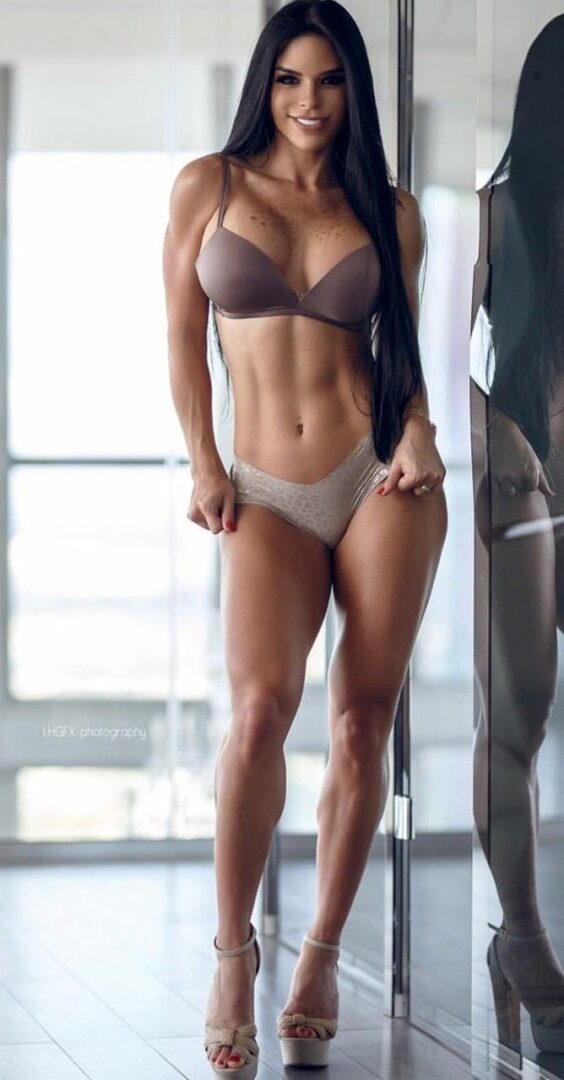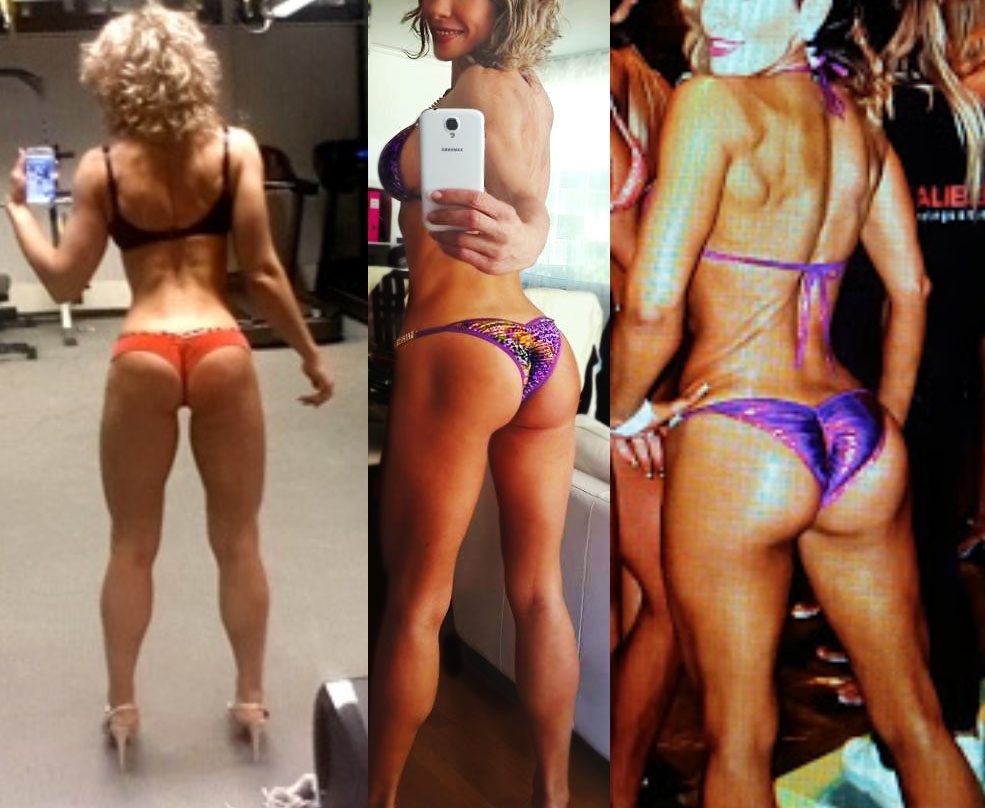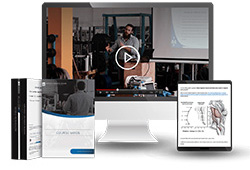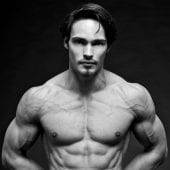The Ultimate Beginner’s Workout for a Bikini Body
Whether you want to get toned, slim thick or bootylicious, this free guide contains all the essentials for women to improve their body, fitness and health. Most guides are written with only men in mind and they’re needlessly long and complicated for beginners. This guide differentiates itself from other beginner guides in 2 ways. First, it’s super succinct. Second, it’s tailored to female novice trainees that want a Bikini Fitness type body without actually competing: an athletic physique with an emphasis on lower body development, a peachy booty, a healthy body fat level and an hourglass figure. Let’s get started!
1. Know what you need for a Bikini body
You can only change your body’s shape meaningfully in 2 ways in the long run: changing your muscle mass and changing your fat mass. ‘Toning’ is a vague informal term that generally refers to positive body recomposition: gaining muscle and losing fat at the same time. If you want to get ‘drier’, ‘tighter’ or ‘slimmer’, that means you have to lose fat. If you want more curves or a bigger booty, that means you have to build muscle. In my experience, many women new to fitness undervalue the importance of muscle mass. If you get really lean without much muscle, you may look anorexic. That same body fat percentage with a lot more muscle mass may win you a Bikini contest. If you like the super skinny classic catwalk look with minimal curves, this guide is not for you. If you do like a more athletic look but you’re afraid of getting ‘too big’, ask yourself: can you see muscle definition, veins or striations in the area you think is too big? If the answer’s no, it’s probably not too much muscle but too much fat that’s bothering you. The vast majority of women that seek my help objectively want to lose fat and gain muscle in the right areas, so this guide will focus on positive body recomposition.

If you want to look like Michelle Lewin, muscle growth and fat loss are your main tools.
2. Your workout for a Bikini body
For both muscle growth and fat loss, strength training is ideal. Per minute of training, research shows strength training results in greater fat loss and health benefits than cardio (endurance training), in contrast to popular belief. The difference in acute energy expenditure is not nearly as large as often portrayed and strength training has more positive effects on long-term energy balance. Weight training improves satiety signaling and its resulting muscle growth will increase your long-term energy expenditure. Performing full range of motion strength training is also more effective to lengthen your muscles than stretching. If you think about it, strength training exercises like squats are essentially loaded dynamic stretches if you perform them over their maximum range of motion, as you generally should. You can generally safely skip all stretching. Stretching really doesn’t achieve much physically in your body other than making you better at stretching. The following program is all you need for most purposes. Feel free to add any recreational exercise to it though.
You can perform this program 2 or 3 times per week, alternating between workouts A and B each time you train. Twice a week is good to start with. This program done 3x per week is intensive for a beginner, but after multiple months you could work up to performing a workout every other day. Done meticulously, you should make great gains for at least a year on this program.
Bikini Body Workout A
1a) Unilateral lying leg curls (or seated/standing/suspended), 3 sets @ 15 RM
1b) High bar squats (or low bar squats or front squats or Bulgarian split squats or reverse deficit lunges), 3 sets @ 8 RM
1c) Dumbbell overhead press (or barbell Military press), 3 sets @ 12RM
1d) Wide grip lat pulldowns (or assisted pull-up machine), 3 sets @ 15 RM
2a) Hip thrusts (or unilateral hip thrusts or pendulum kickbacks), 2 sets @ 15 RM
2b) Face-pulls (or bent-over reverse flys or dumbbell high rows), 4 sets @ 15 RM
Bikini Body Workout B
1a) Pull-throughs (or Romanian deadlifts or 45° hip extensions or reverse hyperextensions), 3 sets @ 15 RM
1b) Unilateral leg extensions, 3 sets @ 15 RM
1c) Calf jumps (or unilateral standing calf raises), 3 sets @ 12 RM
1d) Push-ups (see progression options in the exercise description guide), 3 sets @ 12 RM
2a) Hip abductions, 4 sets @ 15 RM
2b) Butterfly lateral raises (or cable lateral raises), 3 sets @ 15 RM
Workout structure: Exercises starting with the same number, such as 1a and 1b, are part of the same combo: this basically means you can perform these exercises in any order that suits you. When you start your workout, see which exercise’s equipment of the combo is available and do that one. After the set, see if you can move on to the next one. Do whichever is available. If no other exercise of your combo is available, rest 2-5 minutes until you feel ready to perform maximally again and then do your next set of the same exercise. You have great flexibility with your exercise order in this program to get the most out of your time in the gym.
Progression: ‘@ 15 RM’ means ‘at your 15 repetition maximum’: use a weight you can lift up and down only at most 15 times. When you can do 15 reps with that weight, add about 2.5% more weight or whatever is the smallest amount of weight you can add for the next set (often 5 lb or 2.5 kg). You should aim to hit your rep target with progressively more weight over time. Especially the first months, you should be able to move up in weight or perform more reps with a weight compared to the last workout every time you train. Progressive overload is key. You can download a free spreadsheet log book here to track your workouts. Try not to intentionally fail any reps, but do as many reps as you can with good form.
For unilateral (one-limbed) exercises, do your first set with your weaker arm or leg, catch your breath, and then do the same number of reps with your stronger limb.
Exercise technique: You can download a free guide here with all the exercise descriptions. Study the guide. Good technique is paramount to avoid injury and make good gains. Control all your movements, especially when lowering the weights. You can push the weights up explosively if you feel able to retain good control of the movement. Do not compromise on exercise technique or range of motion to lift more weight. Train your muscles, not your ego.
Warming up: Before each workout you should do a warm-up. It needn’t be complicated or take much time. The primary benefit is literally an increase in core body temperature to let your muscles, tendons and nerves function better, so let your body warmth and how ready you feel guide your warm-up. A good general template is to do 5 minutes of low-intensity cardio, like on a cross-trainer or bicycle, and then do some bodyweight squats and hip thrusts. Before you start your heavy work sets of each exercise, perform 1-3 warm-up sets of 5-10 reps with progressively more weight. You can go by feel here. A technical compound exercise like squats probably requires at least 2 warm-up sets, starting with just the bar, whereas a simple isolation exercise like hip abductions just requires a single light set of 5-10 reps.
“Why no ab training?”
Because abs are made in the kitchen. Having abs is mostly a matter of being sufficiently low in body fat so that you can see the abdominal muscles, otherwise they’re hidden by a layer of fat. Fat loss occurs in a largely genetically determined pattern, so getting rid of stubborn fat mostly just comes down to getting leaner. You can’t localize fat loss much, although spot reduction is not a complete myth. Plus, training your abs can only make them bigger, which also makes your waist thicker. That’s fine if you want that, but if you want a slim waist, you should actually refrain from excessive ab training.

My client Alina Olsen’s Bikini body progress over time.
3. Your diet essentials for a Bikini body
To lose fat, your body needs to lose energy. With weight training and a high protein diet, you’ll ensure that your body will burn your fat stores instead of your muscle mass. To lose energy, the body has to be in a state of energy deficit. That means your energy intake has to be lower than your energy expenditure. One way to get into an energy deficit is to track your energy intake by weighing and logging everything you consume, estimating your energy expenditure and then eating less than that. For most beginners, this is not necessary, so if the previous sentence caused your heart to sink, don’t worry. You can achieve a great physique without tracking your calories by virtue of eating a healthier, more satiating diet. These are the most important diet principles to follow for a simple, sustainable, successful diet.
3.1 Consume a fixed number of meals each day at similar times each day. I generally recommend 4 meals a day for women. If you are naturally not hungry in the morning and you train later in the day, you can also have only 3 meals a day with your breakfast postponed to around lunchtime (intermittent fasting). Either can be ideal for appetite management, maximizing muscle protein synthesis, entraining your biorhythm and building sustainable habits. A structured lifestyle makes everything else easier.
3.2 Consume a high-quality protein source with each meal: poultry, fish, meat, Greek yogurt (or quark/skyr/cottage cheese) or multiple eggs (and/or lots of egg whites). You don’t have to track your protein intake if you do this consistently, but if you do, you should get at least 1.8 g/kg protein per day (0.82 g/lb). For example, if you weigh 50 kg, you should get at least 50 x 1.8 = 90 g protein per day. For vegans, things are a bit trickier. I generally recommend consuming 2.3 g/kg protein per day by relying heavily on an 80:20% pea-rice protein blend. A high protein intake helps with both fat loss and muscle growth by stimulating protein synthesis and energy expenditure, as well as suppressing your hunger.
3.3 Consume a good fiber source with each meal. Dietary fiber is incredibly satiating and healthy. The most fibrous foods are generally also the most healthy, especially fibrous fruits and vegetables.
- Veggies top the scales when it comes to nutrient density and satiety per calorie.
- Fibrous fruits: the most satiating ones are berries, pumpkins, grapefruit, papaya, chayote, starfruit, hog plums and peaches. Also great are avocado, apples, tangerines and anything with fewer than 50 kcal per 100 g.
3.4 Base your diet on unprocessed whole foods. The more an animal or plant food is processed from how you’d encounter it in nature, the more likely it is to be highly caloric and devoid of nutrients. Many food processing methods destroy the food’s micronutrients, fiber structure and other healthy substances while increasing its caloric density, creating ’empty calories’. Conversely, if our hunter-gatherer ancestors ate it, it’s probably good for you. You don’t have to consume a strict paleo diet though. For concrete meal ideas, you can find some of my favorite recipes on my site (for free).
3.5 Try to avoid liquid calories. Outright restriction of food choices often doesn’t work well in beginners, so I’d focus on including better foods rather than avoiding poor ones. Most people know which foods aren’t conducive to their fitness anyway. However, liquid calories can sneak up on you. If you drink any sodas, switch to diet sodas, tea, coffee or water. No, artificial sweeteners like aspartame and sucralose aren’t bad for your health [2, 3]. Most liquid calorie drinks have around 50 kcal per 100 g and you generally drink 200-500 ml per serving. That’s 100-250 kcal per serving. Over the course of a day, you may consume more calories from your drinks than from your foods. Many milkshakes, smoothies and Starbucks coffees have as many calories as in a whole meal and they don’t satiate you nearly as well. Whole foods all the way!
4. Don’t focus on supplements
Most people don’t need any supplements to get great results. If you want to speed up your gains, take 3 g creatine monohydrate each day with the first meal after each workout or, if it wasn’t a training day, the first meal of the day. Creatine is safe and as effective as it gets for a legal performance and gain boosting supplement. Don’t expect any magic from it though. Nutrition and training are the pillars of success.
That’s it! These are all the basics you need to get started on your fitness journey.
 Want more content like this?
Want more content like this?
Then get our free mini-course on muscle building, fat loss and strength.
By filling in your details you consent with our privacy policy and the way we handle your personal data.
